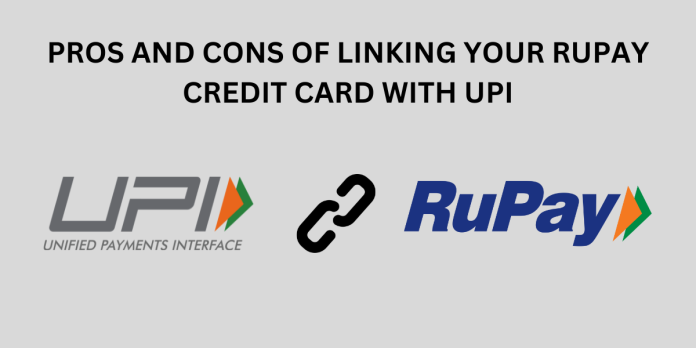The Unified Payments Interface (UPI) has simplified the process of digital payments and money transfers, making life easier for consumers. The previous few years have seen a sharp increase in UPI payments. UPI has grown in popularity in India, as seen by the astounding statistic of more than seven billion transactions executed since September 2023. Until recently, you were limited to either a debit card or a savings bank account to make payments to your UPI. Since RuPay credit cards are now eligible for UPI payments, thanks to the RBI and NPCI, this has changed. RuPay credit cards will soon be compatible with UPI QR codes.
By fusing the flexibility of credit lines with the ease of digital payments, UPI and credit cards work together to create a smooth and adaptable payment experience. Paytm, PhonePe, Baroda MPay, Pockets-ICICI Bank, MobiKwik, iMobile, BHIM app, Airtel Money, Axis Pay, SBI Pay, and Yes Pay are among the many UPI applications available in India. A handful of banks also provide their own UPI apps. Connecting credit cards to UPI has been approved by the Reserve Bank of India (RBI). This advancement has both advantages and disadvantages. This blog will discuss the pros and cons of linking your RuPay credit card to UPI.
Pros of Linking Your RuPay Credit Card with UPI:
- Convenience:
Using credit cards for smaller purchases is more convenient when they are linked to UPI. Credit cards gain greater flexibility with UPI; they are now useful for every transaction that accepts UPI, including peer-to-peer transfers and online payments. The integration of UPI and credit cards streamlines the payment process by allowing users to perform all transactions on one system. Within the UPI interface, users may combine various financial activities, including peer-to-peer transfers, online shopping, and bill payments. The whole user experience is streamlined as a result of not having to switch between several apps or platforms. Modern consumer behavior now includes online buying as a fundamental component. Linking UPI to credit cards simplifies online purchasing by allowing consumers to make payments quickly and securely. This ease of use enables customers to explore a broader selection of online merchants and items.
- Rewards, Cashbacks, and Discounts:
Users may earn reward points on all transactions—even minor ones—by connecting these cards to UPI. Various perks, such as petrol points, eating privileges, and retail bonuses, can be extended by some credit cards. Customers are able to receive these benefits with every purchase when these cards are linked to UPI.
- Credit Limit, EMI, and Revolving Credit:
In comparison to debit cards, credit cards often have larger credit limits. As a result, customers who have a credit card linked to UPI may make larger purchases than they could with a debit card. This option is useful when a customer has to make an expensive purchase but does not have enough cash in their savings account. The ability to transform significant transactions into Equated Monthly Instalments (EMIs) is a feature of many credit cards. Users may simply convert authorized UPI transactions into EMIs by integrating UPI with credit cards. This function allows customers to manage higher bills more easily over time. Credit card users can also have greater financial autonomy by paying off their outstanding debt in installments thanks to the revolving credit function.
Read: A Detail Understanding Of No-Cost EMI
Cons of Linking Your RuPay Credit Card with UPI:
- Overspending Habit:
You might develop an overspending habit due to the nature of credit cards. Credit cards allow users to utilize money they do not currently have, potentially resulting in interest charges on their purchases. When a credit card is linked to UPI, a few things make overspending even easier.
- Debt Trap:
The enticing benefits that come with some credit cards—like cash back or vacation points—may make using a credit card for UPI transactions more tempting. These benefits could be viewed by customers as a perk for their spending.
- Higher Interest Rates:
Typically, credit cards come with higher interest rates, ranging from 18%to 48% annually. Customers who are unable to pay off their credit card debt in full each month incur a substantial amount of interest on the outstanding balance.


